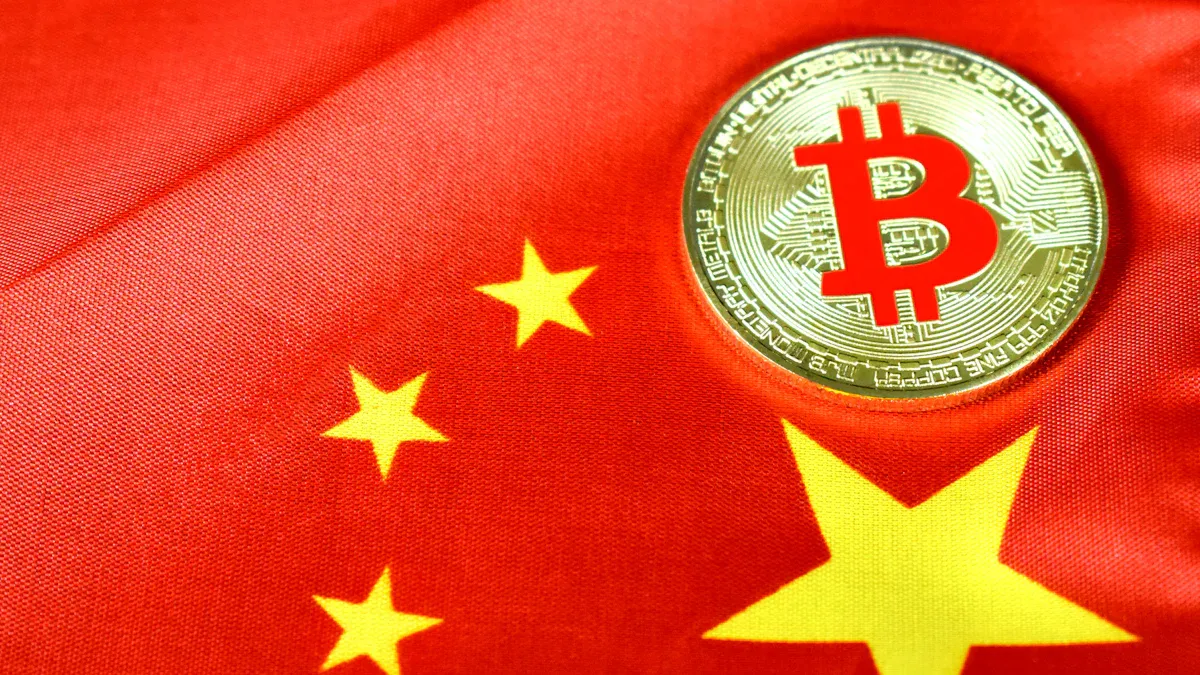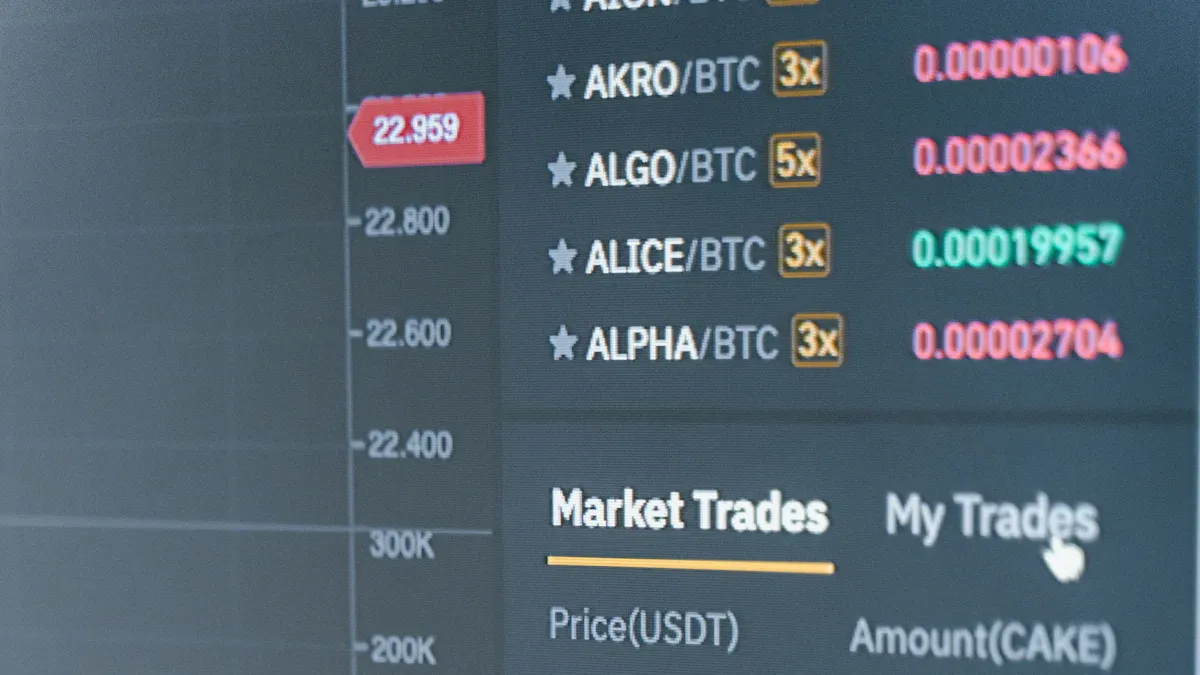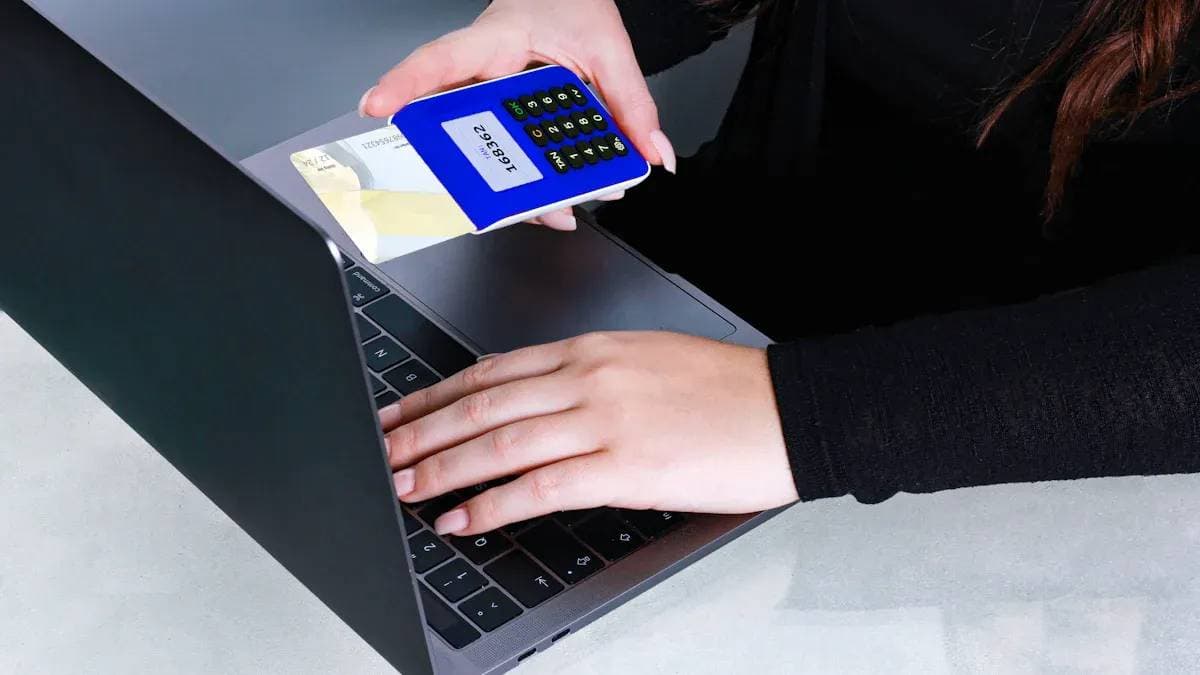- EasyCard
- Trade
- Help
- Announcement
- Academy
- SWIFT Code
- Iban Number
- Referral
- Customer Service
- Blog
- Creator
Remitting from China to Overseas? Complete Guide to USDT Fee Reduction Methods

Image Source: unsplash
Have you ever been troubled by the high costs and long waits when remitting from China to overseas? Traditional bank wire transfers are not only time-consuming but also quite expensive.
Traditional Bank Wire Transfer Fee Reference (USD)
Bank Name Handling Fee Cable Fee Other Fees Processing Time Bank of China 0.1% (min 50) 20 Intermediary Bank Fee 1-5 business days Industrial and Commercial Bank of China 0.1% (min 30) 15 Full Amount Service Fee 25 1-5 business days
In contrast, USDT stablecoin transfers bring revolutionary changes. Using the TRC-20 network, a transaction is usually completed within 1 minute. This article will provide you with a complete set of USDT fee reduction methods, with the core lying in “choosing the right network” and “making good use of platforms”.
Key Points
- Choosing the TRC-20 network can significantly reduce USDT transfer fees, as its cost is almost zero.
- Avoid using the ERC-20 network for USDT transfers, as it usually has very high fees.
- Using the internal transfer function of the same trading platform can achieve zero-fee transfers.
- Consolidating small transfers can reduce total fees, as fees are usually calculated per transaction.
- Before transferring, be sure to confirm with the recipient which USDT network they support.
USDT Cross-Border Transfers: Core Fee Reduction Methods

Image Source: unsplash
Choosing the correct blockchain network is the first and most critical step to minimizing USDT transfer costs. Different networks can have fees differing by hundreds of times. Below, we will analyze the major mainstream networks in detail for you, helping you master the core USDT fee reduction methods.
Prioritize TRC-20 Network: Costs Nearly Zero
If you want transfer costs to approach zero, the TRC-20 network is your best choice. TRC-20 is USDT built on the TRON blockchain. Its huge advantages lie in extremely high speed and extremely low costs.
Did you know? As of October 2025, the amount of USDT circulating on the TRON network has reached about 78.5 billion, comparable to the amount on the Ethereum network, proving its widespread acceptance and market trust.
The TRON network does not use “Gas fees” in the traditional sense but adopts a unique resource model: Energy and Bandwidth.
- Bandwidth: Used for processing simple transactions, such as address activation or transfers. Every new wallet automatically receives a free bandwidth quota daily, enough for several basic operations.
- Energy: Used for processing more complex smart contract operations, and USDT transfers are one such operation.
You can obtain sufficient energy and bandwidth for free by "freezing" (Staking) a portion of TRON’s native token (TRX). When you have enough resources, the fee for USDT transfers is almost negligible. Even if your free resources are exhausted, the fee paid directly with TRX is usually far below 1 USD. According to expert advice, operating during non-peak network hours (such as 2-4 AM UTC) can further save 20-30% in fees.
Avoid ERC-20 Network: Causes of High Gas Fees
In stark contrast to TRC-20’s low costs, the ERC-20 network’s fees (Gas Fee) are notoriously “expensive.” ERC-20 is USDT running on the Ethereum network. Although it has the most extensive ecosystem, its costs for small or frequent transfers will make you hesitate.
The root cause of high fees is network congestion. You can imagine the Ethereum network as a busy highway.
- Huge traffic: Thousands of applications run on Ethereum, especially decentralized finance (DeFi) and NFTs (non-fungible tokens). Decentralized exchanges like Uniswap consume millions of USD in Gas fees monthly.
- Narrow road: Ethereum’s transactions per second (about 12-15 TPS) are far below TRON’s (about 2000 TPS).
- Highest bidder wins: When the network is congested, you need to pay higher “toll fees” (Gas fees) to have miners or validators prioritize your transaction. During NFT minting booms, a single transaction’s Gas fee can even exceed 100 USD.
Therefore, unless the recipient explicitly requires and only accepts ERC-20 USDT, avoid this network for cross-border remittances as much as possible.
Explore Other Low-Cost Networks: BEP-20 and Polygon
In addition to TRC-20, there are other low-cost networks that can serve as alternatives, providing more USDT fee reduction methods for your transfers.
| Network | Average Fee (USD) | Transaction Speed | Congestion Impact |
|---|---|---|---|
| TRC-20 | Usually below $1 | A few seconds | Small |
| ERC-20 | Relatively high (up to $30+) | A few minutes | Very high |
| BEP-20 | Very low (about $0.10 or less) | Fast | Lower |
| Polygon | Extremely low (below $0.02) | Fast | Lower |
- BEP-20 (BNB Smart Chain) This is a network launched by Binance, one of the world’s largest cryptocurrency trading platforms. Its main advantage is extremely low fees, with a single USDT transfer usually costing around 0.1 USD, and it integrates seamlessly with the Binance ecosystem.
Note: BEP-20’s main limitation is its relatively centralized ecosystem, and its acceptance on platforms or wallets outside Binance is not as widespread as TRC-20.
- Polygon (Matic) Polygon is a “sidechain” or “Layer 2” solution for Ethereum, designed to solve Ethereum’s congestion and high fee issues. Transferring USDT on the Polygon network has similarly very low fees, usually below 0.02 USD.
Note: Similar to BEP-20, you need to confirm in advance whether the recipient’s wallet or platform supports Polygon network USDT.
In summary, before starting a transfer, be sure to confirm with the recipient which network’s USDT they accept. Prioritize TRC-20; if the other party also supports it, BEP-20 and Polygon are excellent low-cost choices.
Choosing Trading Platforms: Further Reduce Withdrawal Fees

Image Source: pexels
Choosing the right network is the first step, while selecting the right trading platform is key to saving the “last mile” fees. Even with the same TRC-20 network, withdrawal fees vary across platforms. Mastering the following platform-related USDT fee reduction methods can further lower your costs.
Compare Mainstream Platform Withdrawal Rates
Major mainstream trading platforms clearly list USDT withdrawal rates for different networks. Before withdrawing, take a minute to compare. Usually, TRC-20 network fees are the lowest, while ERC-20 is the most expensive.
Mainstream Platform USDT Withdrawal Rate Reference (USD)
Network Type OKX Withdrawal Fee HTX Withdrawal Fee TRC-20 0.8 USDT 1.2 USDT BEP-20 0.8 USDT 0.8 USDT ERC-20 1 USDT 2.23 USDT
From the table above, you can clearly see that choosing a platform with lower withdrawal rates saves you some expenses per transaction. Although it seems small per transaction, it adds up.
Make Good Use of Platform Internal Transfers for Zero Fees
If you and the recipient happen to use the same trading platform (for example, both have OKX accounts), you can use the “internal transfer” function. This is the most effective zero-cost transfer method.
According to information from OKX, Bybit, and other platforms, internal transfers are completely free and arrive instantly. The operation is also very simple:
- On the withdrawal page, select “internal transfer” or a similar option.
- Enter the recipient’s account information, such as phone number, email, or user ID (UID).
- Fill in the transfer amount and complete security verification.
Please note: Before using this function, ensure the recipient has completed the platform’s identity verification. This method bypasses the blockchain network, so no network fees are incurred.
Pay Attention to Platform Registration Bonuses and Promotions
Many trading platforms launch various promotions to attract new users. You can use these opportunities to offset trading or withdrawal costs.
- Welcome bonuses: Platforms like OKX offer new users a chance to receive up to 50 USDT in “mystery box” rewards after completing registration, identity verification, and first deposit tasks.
- Trading fee rebates: Binance and OKX provide trading fee discounts for new users. For example, registering through specific referral links may give you 20% or even 30% trading fee rebates.
- Limited-time events: Some platforms occasionally hold zero-fee withdrawal events for specific networks, though uncommon, but worth keeping an eye on.
Before starting large transfers, take time to research the latest promotions on major platforms; it may bring unexpected surprises.
Optimize Transfer Strategies: Reduce Unnecessary Expenses
In addition to choosing networks and platforms, you can reduce unnecessary expenses by optimizing your transfer habits. Adjusting some simple strategies can help you save more fees.
Consolidate Transfers: Lower Per-Transaction Average Cost
If you need to make multiple small transfers, a smart approach is to consolidate them into one large transfer. This is because on many blockchain networks, transaction fees are calculated “per transaction,” regardless of the transfer amount.
For example, on the TRC-20 network, transferring 100 USDT and 5,000 USDT consume almost the same network resources, with basically the same fees. If you need to transfer five times, 1,000 USDT each to the same person, you will pay five fees. But if you consolidate them into one 5,000 USDT transaction, you only pay one fee.
This method can greatly reduce the average cost per unit of funds, especially suitable for those with regular large remittance needs.
Time Your Transfers: Operate During Network Fee Lows
For networks like Ethereum (ERC-20) where fees fluctuate in real time, transferring when the network is not congested can save you a significant amount. Network fees (Gas Fee) depend on how many people are using the network at the time.
You can use some tools to track network fees in real time:
- Etherscan Gas Tracker: Ethereum’s official block explorer, providing real-time Gas fee suggestions.
- gasfees.org: A comprehensive website to view real-time fees for multiple blockchain networks, including Ethereum.
Money-Saving Tip According to historical data, network fees are usually lower during late nights and weekends in US time (corresponding to daytime in Asia). If you must use the ERC-20 network, try operating during these periods for lower transaction costs.
Understand P2P Trading Deposit and Withdrawal Methods
When you finally need to convert USDT to fiat currency (such as USD, EUR) in an overseas bank account, P2P (peer-to-peer) trading is another pathway worth understanding. It is also an indirect USDT fee reduction method because it bypasses traditional withdrawal processes.
On mainstream trading platforms’ P2P markets, you can trade directly with other users. You sell USDT to them, and they pay you through agreed methods. Common receiving methods include:
To ensure transaction security, platforms provide escrow services. When selling USDT, the platform locks your coins first. Only after you confirm receiving the buyer’s payment does the platform release USDT to the buyer. This mechanism greatly reduces fraud risk, providing you with an important layer of security.
Now, here is a summary of the ultimate money-saving formula to make every penny count.
Ultimate Money-Saving Formula = Prioritize TRC-20 Network + Low-Fee Platform (such as OKX)
Following this core formula, your per-transaction cost can usually be controlled below 1 USD. At the same time, you can apply the following auxiliary techniques:
- Use platform internal transfers for zero fees whenever possible.
- Consolidate multiple small transfers into one large transaction.
- Operate ERC-20 transfers during network fee low periods.
Flexibly combining these USDT fee reduction methods allows you to achieve maximum cost savings.
FAQ
Is USDT transfer safe?
Your fund security depends on two aspects. Mainstream trading platforms provide escrow services to protect P2P transactions. At the same time, you must securely store your account password and private key. Do not share your sensitive information with anyone to prevent asset theft.
Is using USDT for remittance legal in mainland China?
Regulations on cryptocurrency vary by country and region. You need to understand and comply with the relevant laws and regulations in your location and the recipient’s location. This article only provides technical fee reduction methods and does not constitute any legal or financial advice.
As a beginner, is operating USDT transfers complicated?
No. The operation interfaces of mainstream trading platforms are designed to be very intuitive. You only need to select the coin, network, and enter the address. Platforms usually provide detailed graphic or video tutorials, so you can get started easily.
What if the recipient does not support the TRC-20 network?
Before transferring, you must confirm with the recipient the network types they support. If the other party does not support TRC-20, ask if they accept other low-cost networks like BEP-20 or Polygon. Communication is key to avoiding transfer failures or asset loss.
*This article is provided for general information purposes and does not constitute legal, tax or other professional advice from BiyaPay or its subsidiaries and its affiliates, and it is not intended as a substitute for obtaining advice from a financial advisor or any other professional.
We make no representations, warranties or warranties, express or implied, as to the accuracy, completeness or timeliness of the contents of this publication.




Contact Us
Company and Team
BiyaPay Products
Customer Services
BIYA GLOBAL LLC is a licensed entity registered with the U.S. Securities and Exchange Commission (SEC No.: 802-127417); a certified member of the Financial Industry Regulatory Authority (FINRA) (Central Registration Depository CRD No.: 325027); regulated by the Financial Industry Regulatory Authority (FINRA) and the U.S. Securities and Exchange Commission (SEC).
BIYA GLOBAL LLC is registered with the Financial Crimes Enforcement Network (FinCEN), an agency under the U.S. Department of the Treasury, as a Money Services Business (MSB), with registration number 31000218637349, and regulated by the Financial Crimes Enforcement Network (FinCEN).
BIYA GLOBAL LIMITED is a registered Financial Service Provider (FSP) in New Zealand, with registration number FSP1007221, and is also a registered member of the Financial Services Complaints Limited (FSCL), an independent dispute resolution scheme in New Zealand.




















